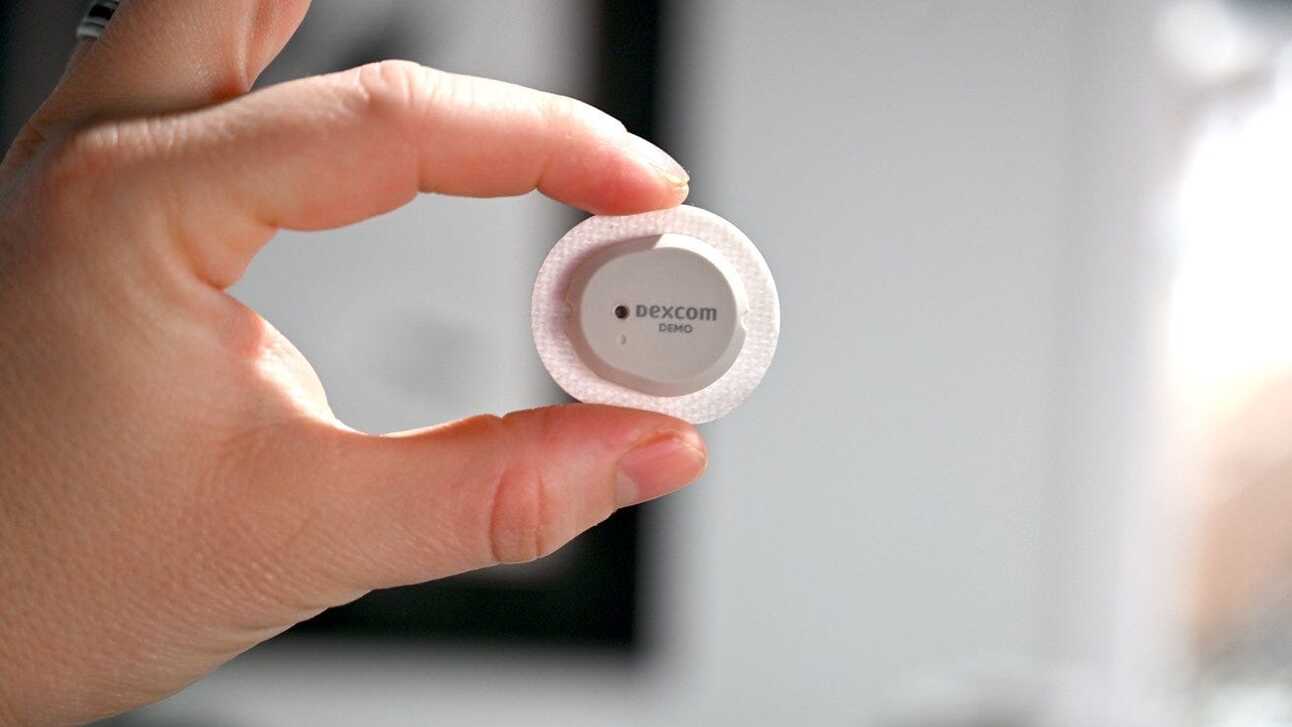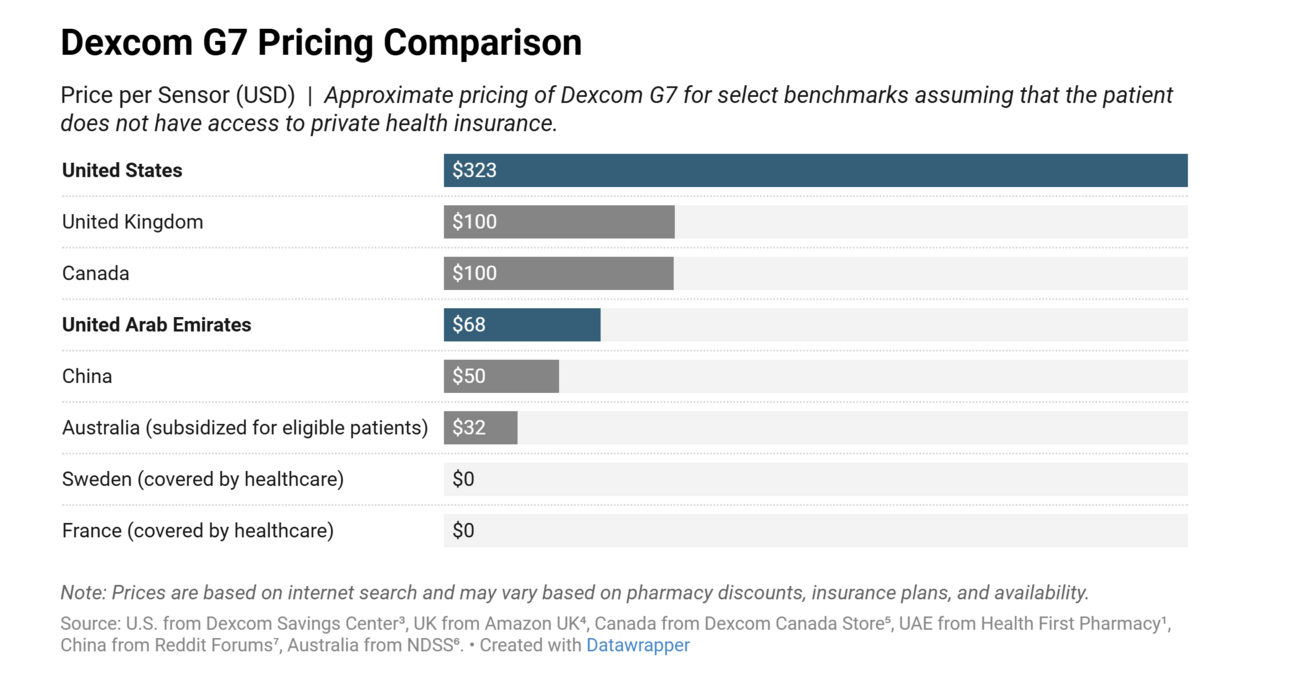- Per My Last Thought
- Posts
- U.S. vs. World: The Cost of Measuring Diabetes
U.S. vs. World: The Cost of Measuring Diabetes
Measuring diabetes in the U.S. compared to other countries reveals stark contrasts in testing frequency, cost, and outcomes, highlighting inefficiencies in America’s approach to a growing chronic disease burden.

Over the past few years, I’ve been monitoring my blood sugar levels to understand why it’s been slightly elevated and how factors like stress, sleep patterns, and dietary habits, common in the consulting profession, affect my glucose. Naturally, I couldn’t just make assumptions. I needed data first. So, I installed a Dexcom G7 Continuous Glucose Monitoring (CGM) System to get real-time insights. After all, making decisions without data would be reckless, at least by consultant standards.
Residing in the UAE, I initially checked local prices. Most pharmacies list a single sensor at AED 250 (approximately $68), which seemed high¹. After searching further, I found a discounted rate of AED 189 (about $52)².
At that point, I figured I’d check the U.S. and other markets to see if I could get it even cheaper. Given that Dexcom is headquartered in San Diego, California, with manufacturing facilities in both the U.S. and Malaysia, I assumed prices might be lower there. Instead, I found that the U.S. is the most expensive place in the world to buy it.
WHAT DID I FIND OUT?
I thought I’d find a good deal out there, instead here’s what I found out. See below a comparison of average per-sensor prices worldwide.

The U.S. isn’t just a little more expensive. It’s over six times the cost of a discounted UAE sensor and nearly ten times what Australians pay under their healthcare system. Meanwhile, in places like Sweden and France, Dexcom users don’t pay anything out of pocket.
WHY IS THE U.S. PAYING THE MOST?
The U.S. healthcare system allows excessive pricing in ways that other developed countries do not. The reasons fall into four main categories:
1- The Insurance Model Creates Huge Price Gaps: Insurance companies negotiate prices with manufacturers, meaning those with coverage pay far less than the uninsured. This results in one person paying $20 per sensor while another pays over $300 for the same product.[⁸] The manufacturer sets an artificially high retail price, knowing that most purchases will go through insurance, which then negotiates lower rates for its customers.
2- No Price Regulations Mean Higher Costs: Unlike in Europe and Australia, where governments set price limits or subsidize devices, the U.S. leaves pricing entirely to market forces. This allows unchecked inflation of medical costs, making essential devices significantly more expensive than in other parts of the world.
3- R&D and Manufacturing Aren’t the Real Issue: Medical companies often justify high U.S. prices by pointing to R&D costs, but this argument doesn’t hold up. Dexcom manufactures in both the U.S. and Malaysia, yet prices are significantly lower in Australia and the UAE, despite similar production costs. The real factor driving price differences is how each country regulates healthcare pricing.
4- The U.S. is Where Medical Companies Maximize Profits: The U.S. market is structured to ensure the highest margins for medical suppliers. Dexcom and similar companies make the bulk of their profits in the U.S. because the insurance-based model allows for inflated prices that would be unacceptable elsewhere. Insurers and manufacturers both benefit, while the patients — especially those without insurance — are left to cover the cost. This setup is not accidental; it is a direct result of how the U.S. healthcare system has been designed.
The U.S. consistently offers the cheapest iPhones, laptops, and high-end electronics, yet this pricing model completely breaks down when it comes to healthcare. This isn’t just a minor issue — it’s a key problem, and one that affects millions of people every day. Fixing it doesn’t require reinventing the wheel; it just takes better price regulation and healthcare policies to make both medical devices and healthcare as a whole more accessible and affordable. Until then, I think I’ll stick to buying my devices in the UAE — it seems to be the better deal out there.
Sources & Prices:
¹ Health First Pharmacy — Dexcom G7 UAE Pricing² Life Pharmacy — Dexcom G7 Discounted Price³ Dexcom Savings Center — U.S. Pricing⁴ Amazon UK — Dexcom G7 Pricing⁵ Dexcom Canada Store⁶ NDSS — Australian Government Subsidized Pricing⁷ Reddit — Dexcom Pricing in China⁸ Dexcom FAQ on Pricing